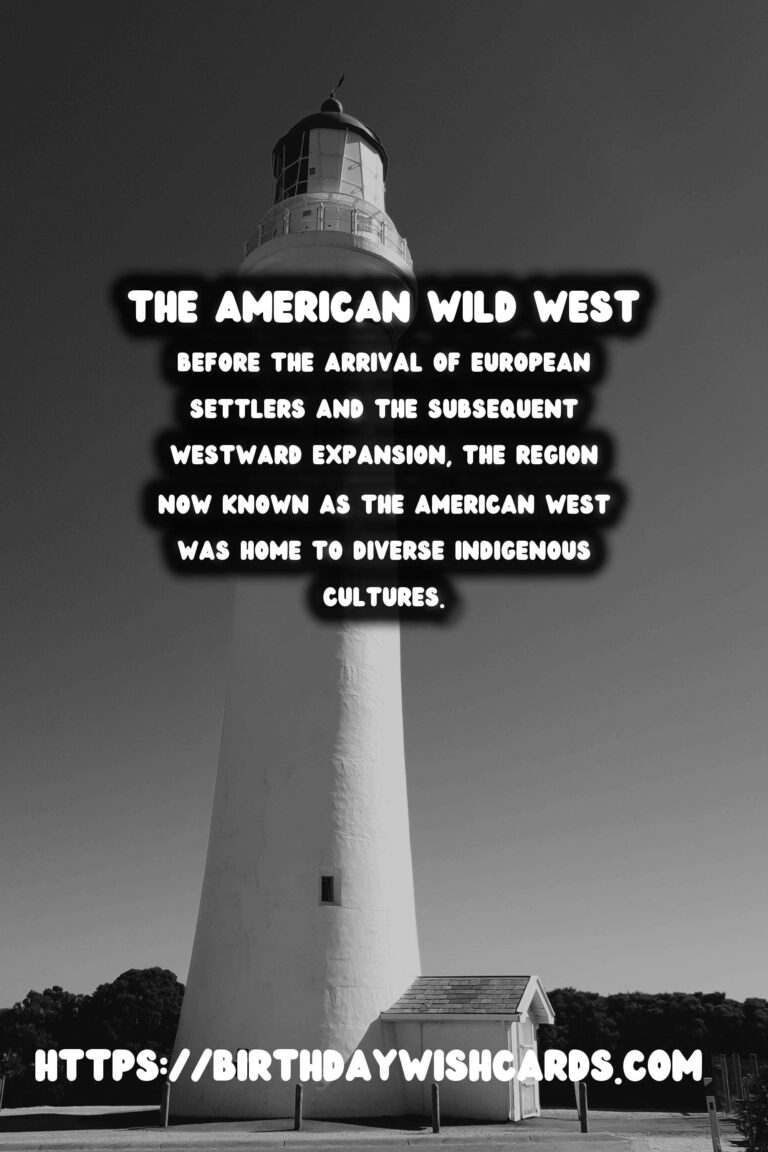
The American Wild West is a period in history that is often romanticized in popular culture. The image of cowboys and outlaws riding through the dusty landscapes of the western United States is a common portrayal. However, the history of the Wild West is incomplete without exploring the rich and complex history of Native American tribes who were the original inhabitants of these lands.
The Land Before Western Expansion
Before the arrival of European settlers and the subsequent westward expansion, the region now known as the American West was home to diverse Indigenous cultures. Tribes such as the Apache, Navajo, Sioux, Cheyenne, and Comanche have lived on these lands for thousands of years. They developed societies with intricate social structures and deep spiritual connections to the land.
Impact of Colonization
The colonization and expansion of the United States into native territories brought about drastic changes. As settlers moved westward, they encroached on Native American lands, leading to numerous conflicts and wars. Treaties were often made and broken, leaving many tribes displaced and their way of life threatened.
The introduction of new diseases by European settlers also devastated Native populations, as they had no prior exposure or immunity to illnesses like smallpox, measles, and influenza. This resulted in a significant decline in their numbers, further weakening their ability to resist the encroachment of settlers.
Famous Conflicts and Agreements
Several famous conflicts mark this turbulent time. The Battle of Little Bighorn in 1876, where General Custer and his forces were defeated by a coalition of Sioux and Cheyenne warriors, stands out as a significant victory for Native American forces. Despite such victories, the increasing military strength of the United States led to more defeats and forced relocations for many tribes.
The Trail of Tears, resulting from the Indian Removal Act of 1830, is another dark chapter, illustrating the forced migration of the Cherokee and other tribes from their ancestral lands to designated Indian Territory, which is now part of Oklahoma.
Cultural Contributions
Despite facing immense adversity, Native American cultures have left a lasting impact on the American landscape and psyche. From indigenous art and crafts to contributions in agriculture, medicine, and ecological knowledge, Native American influence is deeply embedded in American culture.
Traditional dances, music, and oral stories continue to be celebrated and preserved, offering insight into the rich cultural heritage of Native American tribes.
Preservation and Recognition
The fight to preserve Native American history and rights continues today. Across the United States, there are numerous initiatives aimed at recognizing and revitalizing native cultures. The National Museum of the American Indian in Washington, D.C., stands as a testament to the efforts to celebrate and educate the public about Native American history and culture.
Land acknowledgments, collaborations with Native communities on projects, and educational reform are part of the ongoing efforts to ensure that the true history of the American West is acknowledged and preserved.
Conclusion: A Story of Resilience
The history of the American Wild West is incomplete without the stories of the Native American tribes who have called these lands home for centuries. Their resilience in the face of adversity is a powerful testament to their enduring legacy within American history.
The American Wild West is a period in history that is often romanticized in popular culture. Before the arrival of European settlers and the subsequent westward expansion, the region now known as the American West was home to diverse Indigenous cultures.
#NativeAmericanHistory #WildWest

